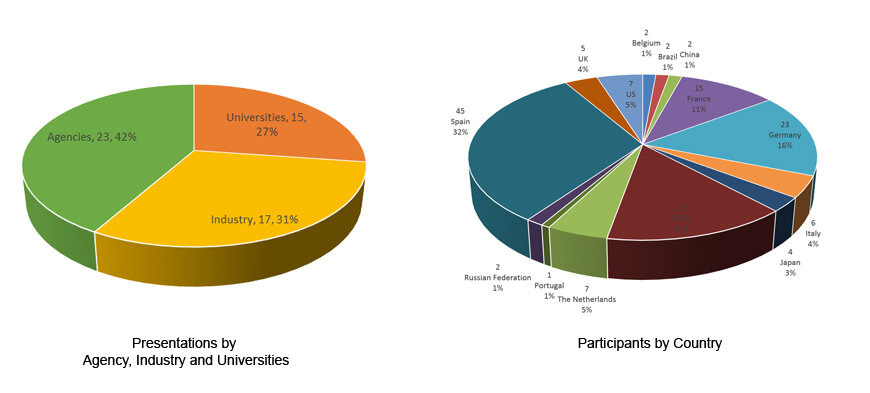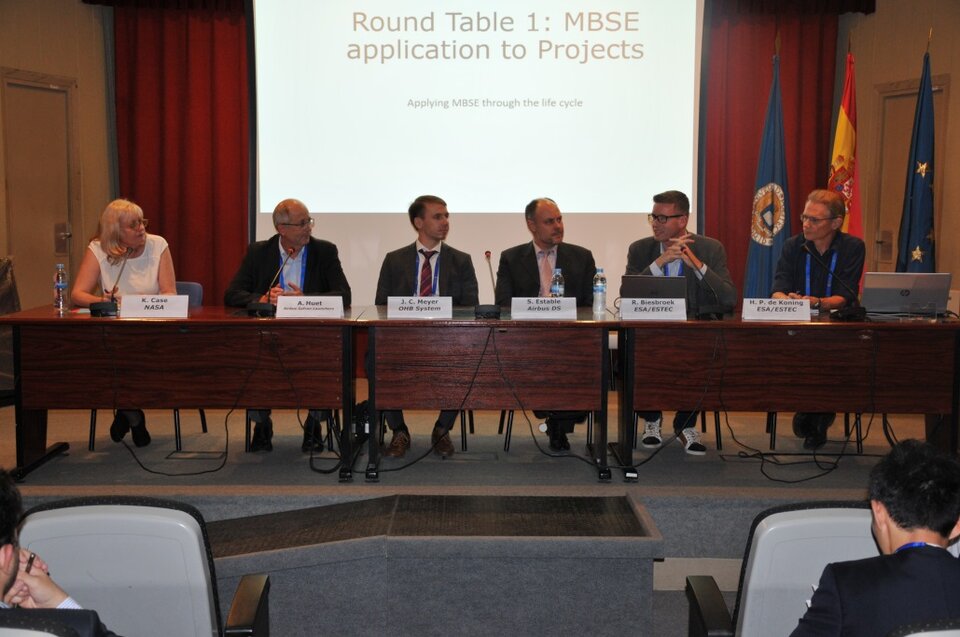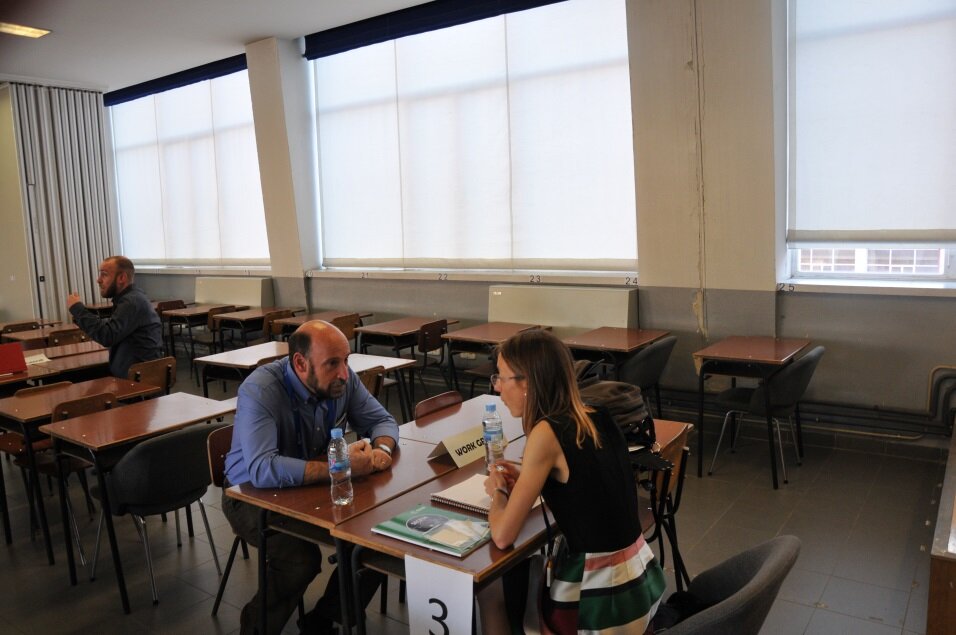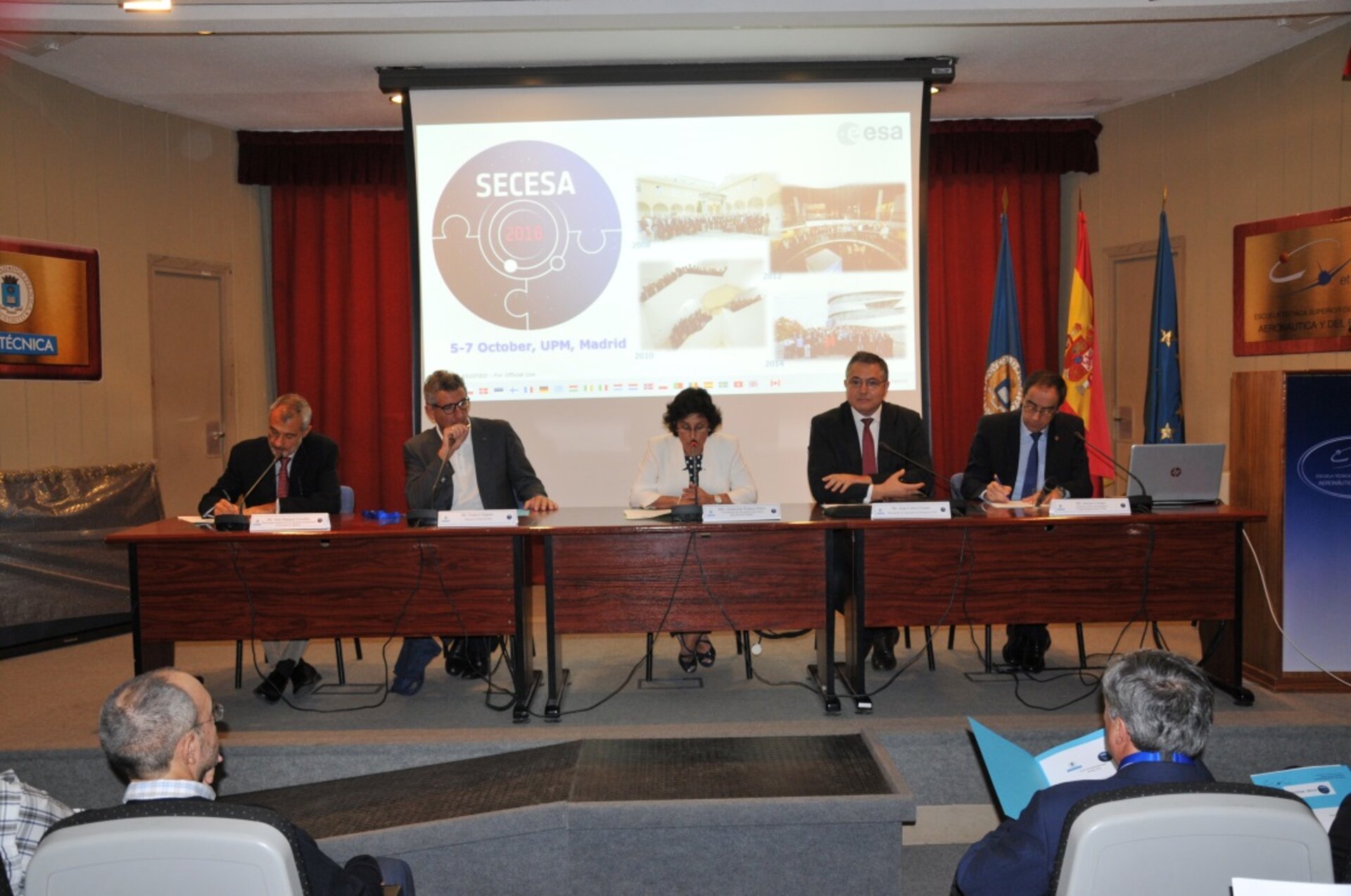Systems and Concurrent Engineering for Space Applications (SECESA 2016)
The city of Madrid was the venue for the seventh International Conference on Systems and Concurrent Engineering for Space Applications (SECESA 2016) jointly organised by ESA in collaboration with the Universidad Politécnica de Madrid (UPM) at the Escuela Técnica Superior de Ingeniería Aeronáutica y del Espacio (ETSIAE). Once again, the conference proved to be an excellent forum for systems engineers and specialists working in a concurrent engineering environment to discuss common problems, show each other new software, applications, tools and methodologies and to share the direction being taken by others in the space engineering community.
The Conference was opened with welcome speeches from the Vice-Rector of the University, the Directors of ETSIAE, of Centre for the Development of Industrial Technology and of Universidades de la Comunidad de Madrid, followed by the ESA Director of TEC and ESTEC and concluded by the co-organisers.

The workshop was attended by approximately 150 specialists and industry leaders representing all the European primes and space agencies. Also representatives from NASA, JAXA and the Chinese National Space Science Center as well as many universities and SME’s, from both Europe and as far afield as Brazil either presented papers or posters. With over 50 papers and keynote speeches and 15 posters in a dedicated session, the workshop was spread over 3 days and for the first time also included two round table discussions, a “MEET THE EXPERTS!” session, surveys and an interactive presentation from the students of UPM on a recent concurrent design study they carried out using the Open Concurrent Design Tool (OCDT).

The conference was split into 6 distinct sessions interspersed with 4 inspiring keynote speeches and poster sessions as well as the aforementioned round tables and meet the experts. The 6 sessions covered the following topics:
- MBSE Approach to “End to End” Systems Development
- Systems and Concurrent Engineering Methodologies
- Facilities and Infrastructure
- Tools and Models
- Academic Perspectives
- Systems Engineering Applications

A number of papers emphasized changes to the design process due to the new trends in Advanced Manufacturing, Life Cycle Assessment, Design for Demise, and two round tables offered the opportunity to discuss the concepts of Design to Produce and Space 4.0.
The posters were a mixture of static presentations and interactive demonstrations and covered subjects as diverse as, designing the X-ray imaging polarimetry explorer using MBSE, to the international post graduate master programme for space exploration SEEDS. A large interactive touch screen was used in the lobby both to display information useful for the organisation of the conference but also by one of the poster presentations which used it to show a synoptic representation of the model tree for a space mission design study.

The round tables involved panels of leading experts from both industry and agencies in a free and open discussion backed by outline presentations to discuss for the first round table the application of MBSE throughout the mission lifecycle and for the second round table simulation and interactive visualisation throughout project phases. These are obviously subjects that will have a big effect on the future development of tools and processes used in the project lifecycle and the round tables aimed at introducing new topics into the discussion, acknowledging the work to be done to achieve solutions to the new challenges.
On the Thursday evening everyone went into the centre of Madrid for a conference dinner held in the beautiful garden of Palacio de Linares preceded by aperitifs sponsored by RHEA. The dinner was a great success and allowed people to unwind and get to know each other socially as well as professionally. Massimo livened up the dinner with a ghost story complete with an apparition that turned out to be Ilaria under a white sheet. The dinner finished around midnight and most people went back to their hotels happy and full of good Iberico pork and delicious white chocolate and mango dessert.

The last day started with a keynote speech from Carlos Corral van Damme from ESA describing the CHEOPS satellite development and the impact of decisions taken in preliminary design on later phases. Of particular relevance to the conference was the emphasis Carlos felt should be given to the quality of the requirements,how they are linked to the design and how lessons learned from later phases of a design can be fed back into the early phases.
The overriding theme of the conference seems to have shifted from previous SECESA’s, where the emphasis was on facilities and processes to now where the emphasis is more on the detailed tools and how concurrent engineering applies to later .
A special issue of the CERA Journal will be dedicated to the best 6-7 papers of SECESA 2016.
The next SECESA is in 2018 and is to be held at the University of Strathclyde in Glasgow – See you there!!
For further details, check the CDF webpage http://www.esa.int/cdf


